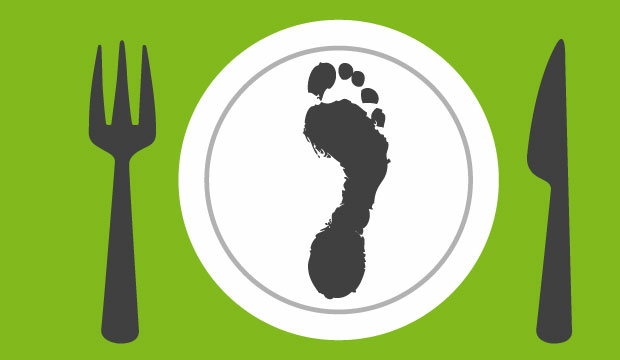Last week I came across an interesting test on the website of ‘het voedingscentrum’. This quick test is about how your food(print) affects your ecological footprint. By wanting to know more on this particular subject the test made me curious about my own ‘foodprint’; what do my own specific food choices mean for the impact on the environment? Not only for the space but also for the amount of water used in the process; from production, transport, and buying to your way of consuming the product.
The simple test does not take longer than 3 minutes to fill in and is not really advanced, therefore it could be seen as just a fun and easy way to check how your personal behaviour concerning food choices and how it is compared to the average in the Netherlands. However, it could also be seen as a guideline for making more sustainable food choices as they do provide a list of tips to improve your behaviour regarding this topic. With food being responsible for about one third of our footprint regarding to space and two third of our footprint regarding to use of water, a lot could be accomplished by reducing our (direct and indirect) consumption by following (some of) their tips:
Energy-conscious cooking
Do not use pans larger than necessary, put the lids on your pans and use the minimum amount of water in your pans to boil food. Thaw products on your countertop or in the refrigerator before you're going to heat them. A microwave oven uses less energy than an oven. Cooking on gas costs the least energy. Oil crops such as palm oil, soybean oil, sesame oil and sunflower oil contribute significantly to our use of water.
Conscious drinking
Drinks often score high in foodprint; whether it comes to coffee, sodas, fruit juice, wine or beer. Drink preferably tap water or tea. Reuse your own bottle to take water with you.
Coffee, tea and cocoa have a large water footprint. The water consumption of coffee is almost ten times higher than that of tea. Products that contain much sugar are generally high in water use. Fruit juices are fairly low on water use, however there is a difference; apple juice for example, has a lower water use than orange juice. When it comes to fruit, you better not take tropical juices.
Drink alcohol in moderation, the amount of water used for the production of beer is lower than that of wine.
Conscious eating
Do not eat more than your body needs. Overeating can lead to obesity and unnecessarily increase your food print. Take smaller portions for example in meat and sauce, sweet desserts and snacks. To check how energy consuming your meals are you can try the ‘klimaatweegschaal’
Fruits and vegetables
Try to eat as much seasonal fruits and vegetables, these have the lowest footprints. You can also opt for fruit and vegetables which are environmentally friendly cultivated (for example, organic or eco-label). Organic products generally have one-fifth less use of water than non-biological ones.
The average Dutch ‘foodprint’ according to the website of ‘het voedingcentrum’ is 2,1 hectare, however, only 0.9 hectare is available per person living on our earth. Although still much higher than is available, compared to the average I am doing a lot better with an estimated score of 1,6.
Not only my foodprint is lower than average, also my waterprint is. With 3459 Litres a day, the Dutch average is almost double the one that is being estimated for my lifestyle. This amount of water that is being used on a daily base is only for a small part used by our (direct) demand for water (eg. by drinking, flushing the toilet, taking a shower or doing the dishes).
I think this test, although (or because) it is kept simple and short is a good way to confront people with the way their personal behaviour and choices is affecting the environment. For me the test, and especially the results made me realize that I could definitely be more aware of my choices when I’m buying my food.
